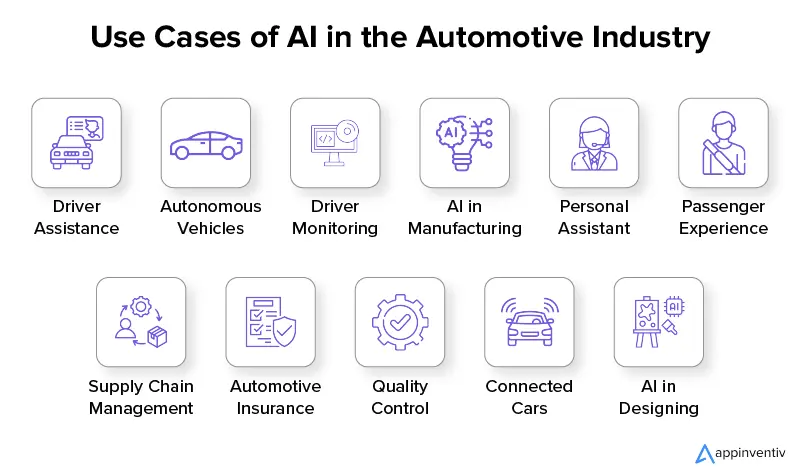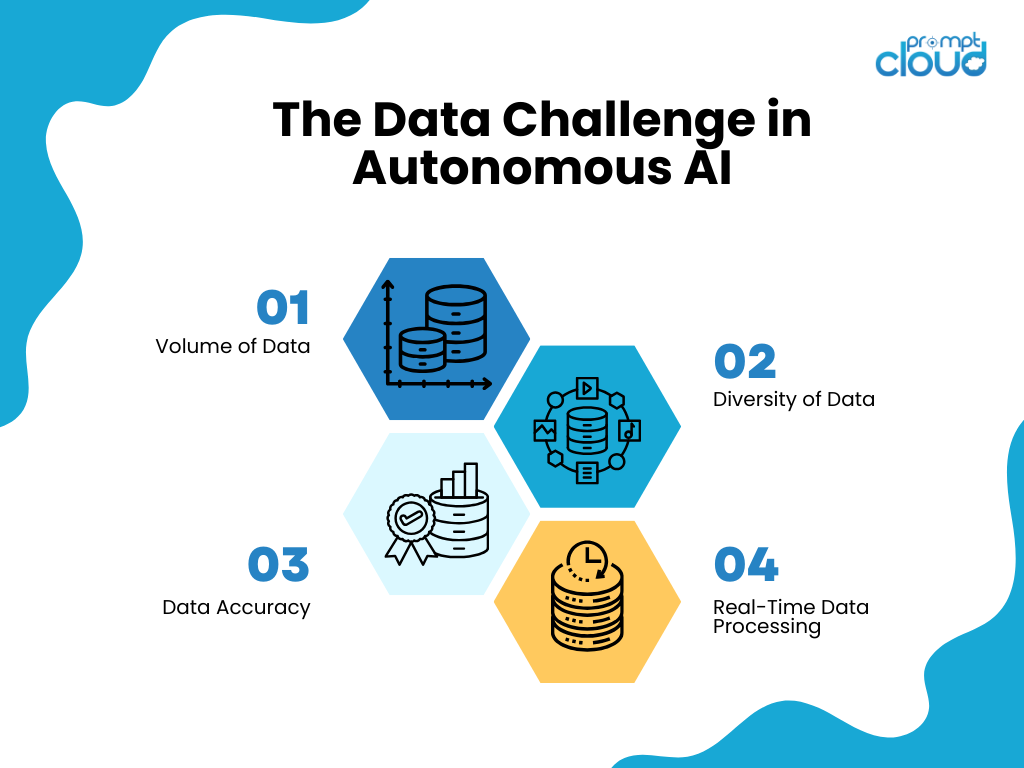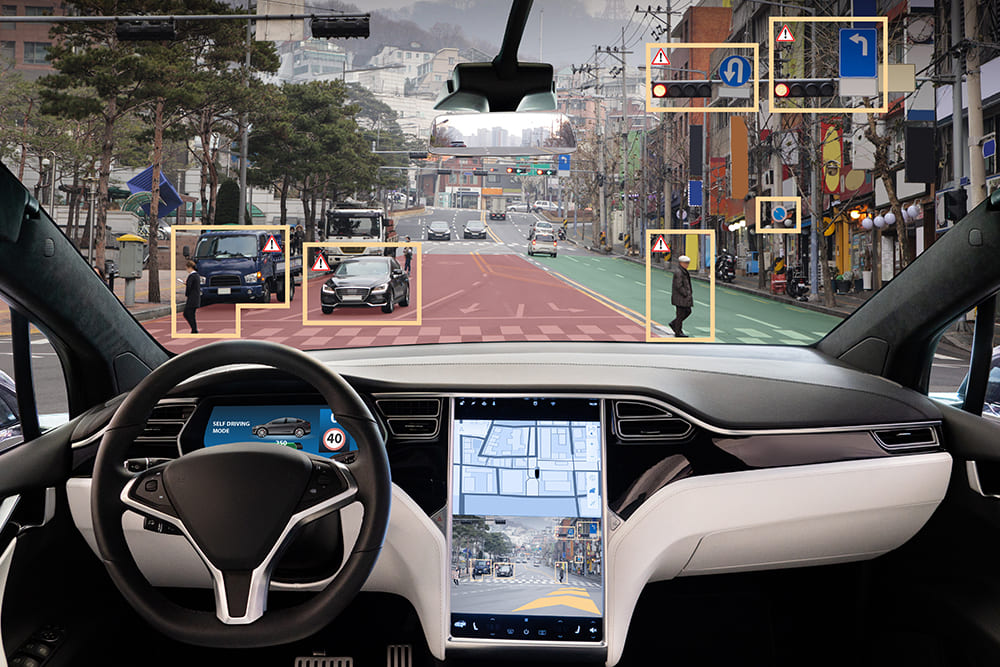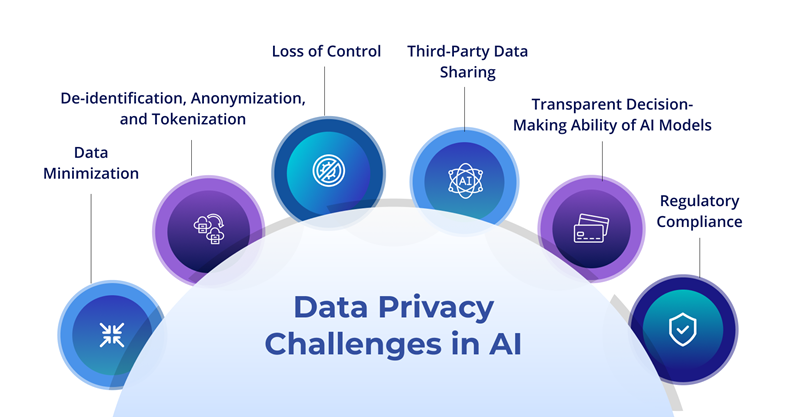
When we think about autonomous AI, we often imagine sleek self-driving cars gliding through traffic, making split-second decisions, and communicating seamlessly with other vehicles. It feels futuristic, almost sci-fi. But behind these intelligent systems lies something far less glamorous yet infinitely more critical—high-quality data.
Without clean, diverse, and actionable data, AI in autonomous vehicle technology cannot function effectively. Data isn’t just a resource; it’s the foundation on which the entire autonomous ecosystem is built. In this article, we’ll explore why high-quality data is the linchpin for scaling autonomous AI, the challenges involved, and the strategies industry leaders are adopting to drive innovation.
Let’s dive in.
How Autonomous AI Is Shaping the Future of Automotives?
Autonomous AI isn’t a futuristic concept anymore—it’s happening right now. From advanced driver-assistance systems (ADAS) to fully autonomous vehicles cruising city streets, AI is transforming how we experience mobility.

Image Source: Appinventiv
Key Applications of AI in Autonomous Vehicles:
- Object Detection and Recognition: Identifying pedestrians, vehicles, and obstacles in real time.
- Route Optimization: Dynamic mapping and navigation based on live traffic data.
- Decision-Making Systems: Real-time decisions like when to stop, accelerate, or change lanes.
- Predictive Maintenance: Anticipating vehicle failures before they happen.
But while the technology is groundbreaking, the real question is: How do we ensure these AI systems are reliable at scale? The answer lies in data.
Why is high-quality data non-negotiable for Autonomous AI?
Imagine teaching a child to recognize traffic lights using blurry images and incomplete instructions. The child would struggle, right? The same logic applies to AI systems. Poor-quality data leads to poor decision-making, and in the case of AI in autonomous vehicles, poor decisions can have life-threatening consequences.
What Are the Key Data Challenges in Autonomous AI?
As the automotive industry moves toward scaling autonomous AI, several data-related challenges must be addressed. Autonomous vehicles generate vast amounts of data daily, and processing this information quickly and accurately is critical for success.

- Volume of Data: Autonomous vehicles are equipped with a variety of sensors that generate terabytes of data daily. These data streams—ranging from camera footage to radar readings—must be processed quickly and effectively in real-time.
- Diversity of Data: Autonomous vehicles must operate in a wide range of environments, from rural roads to busy city intersections. Training AI to recognize and adapt to various road conditions, traffic patterns, and weather scenarios requires a diverse dataset.
- Data Accuracy: High accuracy is critical for autonomous systems, as even small errors in data can result in significant mistakes on the road. Inaccurate sensor readings or poorly labeled datasets can lead to wrong decisions, potentially jeopardizing safety.
- Real-Time Data Processing: AI systems in autonomous vehicles must process data and make decisions in milliseconds. Slow processing could lead to delays, making it difficult for vehicles to react to sudden changes in the environment.
These challenges highlight the need for a comprehensive strategy to scale data collection, processing, and analysis for autonomous AI systems.
Why Is High-Quality Data Essential for Innovation?
1. Enhancing Object Recognition Models
High-quality data ensures AI models can accurately detect pedestrians, cyclists, vehicles, and other obstacles, even in poor lighting or extreme weather.
2. Predicting Traffic Patterns
By analyzing historical and real-time data, AI can predict congestion points, suggest alternate routes, and optimize travel times.
3. Improving Edge-Case Handling
Autonomous vehicles often encounter rare scenarios, like unexpected road closures or animals crossing the road. Synthetic and high-quality real-world data help train AI systems to handle these edge cases better.
4. Ensuring Safety Standards
Safety is non-negotiable in autonomous driving. Well-structured datasets allow AI systems to reduce false positives (e.g., misidentifying a shadow as an obstacle) and improve decision accuracy.
Every milestone in AI autonomous vehicles depends on how effectively companies can harness and refine their data.
How to Scale Autonomous AI with Smarter Data Strategies?
The automotive industry is adopting smarter ways to ensure the data powering AI in autonomous vehicle technology is reliable and scalable.
1. Multi-Source Data Collection
One key strategy to scale autonomous AI is to gather data from a range of different sources. While in-vehicle sensors such as LiDAR, radar, and cameras are critical, additional data from external sources like maps, GPS, and even real-time traffic feeds play a crucial role in enhancing the AI’s decision-making capabilities.
For example, integrating weather data can help AI anticipate dangerous road conditions like ice or heavy rain, while real-time traffic updates can optimize route planning to avoid congestion.
2. Synthetic Data Generation for Rare Scenarios
In the real world, autonomous vehicles will encounter countless rare and unique scenarios that are difficult to capture through traditional data collection methods. Think of a dog suddenly running across the road or a person making unpredictable movements on a busy street. To overcome this challenge, AI developers are using synthetic data generation techniques, such as computer simulations, to create data for these rare events.
Synthetic data allows the AI to “experience” and learn from these edge cases before they occur in the real world, ensuring the vehicle is prepared for unexpected situations.
3. Real-Time Data Pipelines for Faster Decision-Making
To make split-second decisions on the road, autonomous vehicles need to process data in real-time. Real-time data pipelines ensure that data from the vehicle’s sensors is immediately sent to the AI system for processing and decision-making. Minimizing latency is key to enhancing the responsiveness of the vehicle’s actions, allowing it to avoid accidents or adjust driving behavior as needed.
4. Data Validation and Quality Control
Not all data is created equal, and even the best AI models can fail if the data they are trained on is of poor quality. To ensure that the data being fed into the system is accurate, data validation techniques are employed. This process involves verifying sensor accuracy, checking data consistency, and correcting errors in real-time. With strict data validation procedures in place, developers can ensure that the AI system makes safe and informed decisions.
5. Collaborative Data Sharing and Open Datasets
The vast scale of data required for autonomous AI means that no single company can possibly gather and process it all on its own. Increasingly, automakers and tech companies are collaborating to share anonymized data across different platforms, creating a more robust and diverse dataset. Open datasets also allow for the creation of better machine learning models that can generalize across a wider range of environments and situations.
These strategies highlight that scaling autonomous AI is not just about collecting data—it’s about refining and using it intelligently.
Real-World Examples of Autonomous AI Innovations
Several companies are already putting these data strategies into practice, showcasing the potential of high-quality data in scaling autonomous AI.
1. Tesla’s Self-Driving Fleet

Image Source: Bernard Marr
Tesla has been collecting vast amounts of data from its fleet of vehicles on the road, using it to improve its Autopilot system. By analyzing data from millions of miles driven, Tesla continuously trains its AI models to enhance the vehicle’s ability to recognize obstacles, follow traffic signals, and make driving decisions.
2. Waymo’s Autonomous Taxis
Waymo, a subsidiary of Alphabet (Google’s parent company), has been running autonomous taxi services in select cities. By using a combination of real-world data and simulated environments, Waymo has refined its AI models to handle urban traffic, pedestrians, and unpredictable events. The company also collaborates with various data providers to enhance its vehicle’s capabilities.
3. Cruise by General Motors
Cruise, backed by General Motors, uses synthetic data to train its AI systems on rare edge cases. The company also uses real-time data from a range of sensors to improve its self-driving cars’ performance in diverse traffic environments. Their system learns continuously from the data, making it more reliable and safer for everyday use.
The Future of Autonomous AI: What’s Next?
The next decade will see significant advancements in AI in autonomous vehicle technology:
- Fully Autonomous Public Transit: AI-powered buses and shuttles operating seamlessly across cities.
- Smart Traffic Ecosystems: Vehicles communicating with traffic lights and other infrastructure for optimized flow.
- Widespread Adoption of Level 5 Autonomy: Fully self-driving cars without human intervention.
But none of these milestones will be possible without the right data infrastructure.
Data Privacy and Security Challenges in Autonomous AI

Image Source: Fortanix
With great data comes great responsibility. Autonomous vehicles collect sensitive information, including location history and user habits.
Best Practices for Data Security:
- End-to-end encryption for all data transmissions.
- Strict adherence to global privacy standards like GDPR.
- Anonymization of user data to protect individual privacy.
Balancing innovation with privacy will be critical for earning public trust.
Conclusion
The future of autonomous AI isn’t just about smarter algorithms—it’s about better data. From enhanced safety to seamless traffic navigation, the potential of AI in autonomous vehicles depends on our ability to scale data-driven systems effectively.At PromptCloud, we specialize in providing high-quality, scalable data solutions to help businesses harness the full power of AI. Whether you’re in the automotive sector or another industry, we can help you scale your AI projects with the data that drives innovation. Schedule a demo today!




















